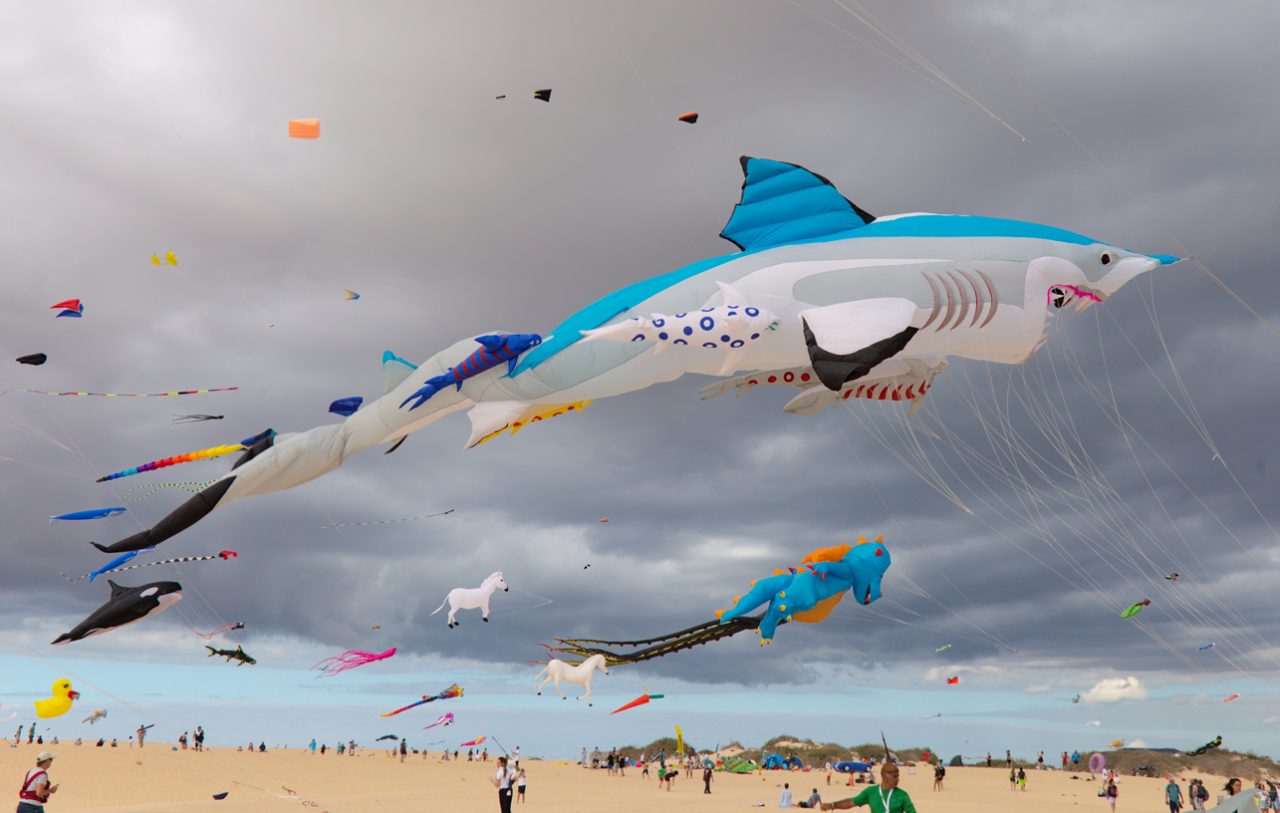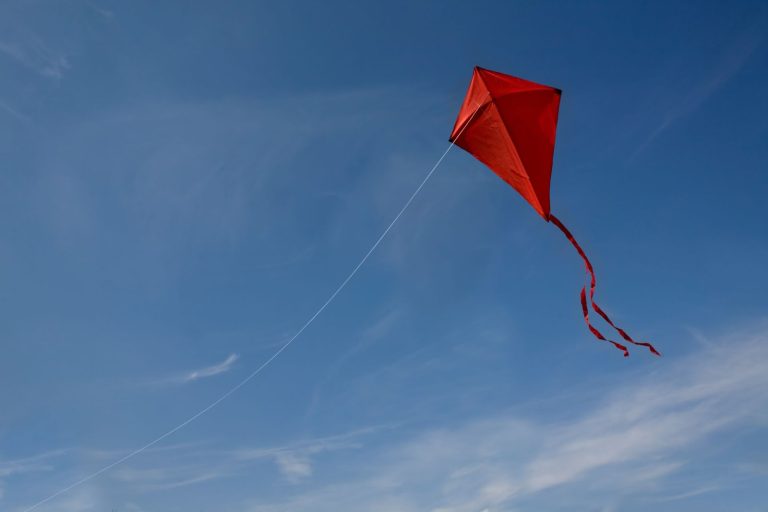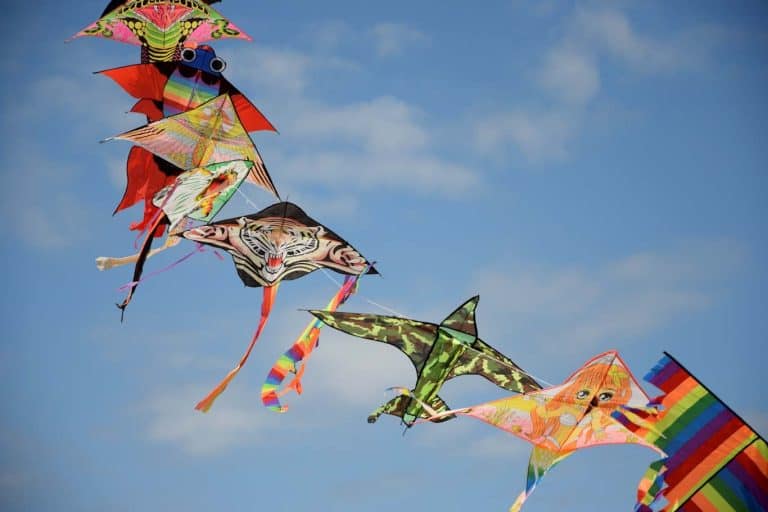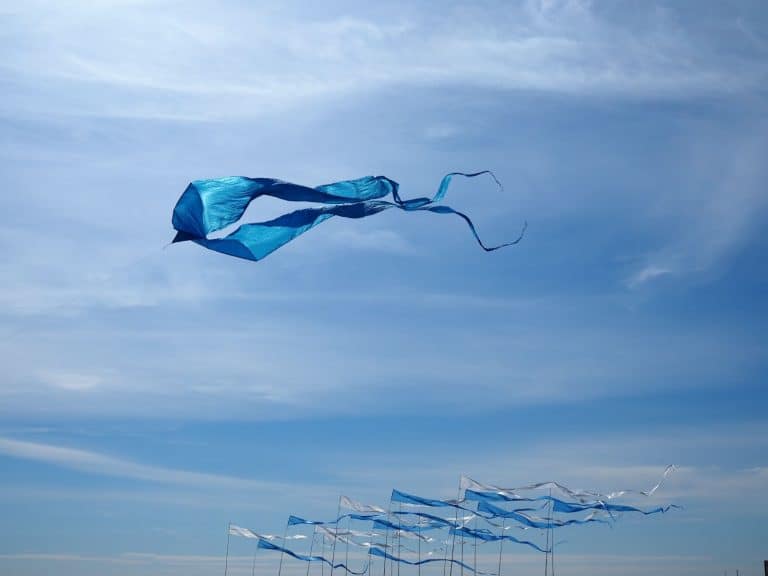8 Different Types Of Kites Explained
Flying kites are always the go-to activities of families or even friends. It’s one active recreation you can enjoy while in nature. Flying a kite is indeed a thrilling activity. On the other hand, choosing a kite can be too much for some. Well, there are too many options!
The types of kites are the Diamond, Delta, Cellular, Parafoil, Rokkakus, Sport Or Stunts, Traction, and Sled Kites.
With a wide overwhelming kind of design and style, it is crazy to choose just one. Understandably, choosing the ideal kite for you should be done with the utmost consideration. Well, you will not enjoy the fun of flying a kite if your kite
doesn’t resonate with you well. It’s like drinking a cup of joe; it must be perfect to feel the warmth and aroma.

What Are The Different Types Of Kites?
Being fascinated and captivated by kite flying is a normal response. Who wouldn’t be mesmerized by the variety of colorful and unique kite styles and designs? It’s always in our instincts to experience flying. So, it’s entirely natural behavior if you ever felt jealous of a flying bird!
If you’re one of those who want to experience kite-flying, you’re now wondering about the best kite for you. There are many types! Or you know one of the types of kites that are considered the household name. To give you a context, there are different kite shapes, sizes, and styles. To name here are the types of kites: (source)
Diamond Kites
You may have seen these kites multiple times in your lifetime. It is a household name and the most traditional kite among all the classes. It is the easiest to fly and is usually suitable for beginner adults and young kids. It is because they are reliable and sturdy as long as the materials used are of good quality.
You can make diamond kites using paper, cotton, or plastic. If making a diamond kite is not to your liking, you can buy these anywhere online or in physical stores. Diamond kites come in ripstop nylon or polyester fabrics. Some have plastic rods; others use fiberglass rods for its frame.
Delta Kites
Aside from diamond kites, delta kites are a common household name in kite flying. Delta kites have a triangular shape that mimics a paragliding tool. Moreover, delta kites come in two lines, single and dual, offering rangers of performances. Of course, this depends on your interests and skills.
There are delta kites that have tails. Like diamond kites that you can fly in harsh winds, delta kites are good with turbulent winds. These kites also sport ripstop fabric on their tear-resistant sails. There are also light wind delta kites that you can buy in different shops—online or offline.
Cellular Kites
The best word to describe cellular kites is “Eccentric.” Cellular kites have a rather sophisticated design that overdoes box kites. These kites have a three-dimensional shape with multiple colors. Although box kites are cellular kites, cellular kites often vary in shape and style.
You’ll see cellular kites with fins or wings. These kites are eye-catching but heavy to handle. That’s why it needs an ideal and consistent wind to fly. Moreover, launching cellular kites is challenging due to their heavy quality and weight. Therefore, a good puff and air blow keep this bad boy afloat.
Parafoil Kites
Another name for parafoil kites is foil kites. These kites have one thing in common that sets them apart from other kites—it’s shaped like a parachute. Many use parafoil or foil kites when kiteboarding, but these can also be used for land kiting.
Unlike diamond, delta, and cellular kites, parafoil kites don’t have a solid frame. The good thing about these kites is that they will not suffer damage when they hit the hard land or are less likely to break their frame. Therefore, a good kite for beginners—not to mention its ease of flying.
Rokkakus Kites
Rokkakus originated in Japan. These kites have six sides and are considered fighter kites designed in a vertical hexagon. This kite has four-point bridles that make up its shape. Since Rokkakus are fighter kites, you can use them for fighting kite competitions.
Rokkakus are stable and reliable like delta kites. These kites can come with different traditional and creative designs, and they can come with hand-painted pictures or designs of famous Samurai and other symbolisms to attract wealth. Traditionally, Rokkakus consists of washi paper and bamboo sticks or spools—making them lightweight, but now they come with ripstop fabrics to maximize durability.
Sport Or Stunts Kites
These kites are perfect for you if you’re a professional kite-flier who joins a sports kite contest. These kites can perform sophisticated tricks that traditional kites can never do. The only similarity among other kites is that they come in various shapes.
Stunt or sport kites have dual lines for convenient control and quick response to do tricks. Quad lines are also in sports or stunt kites. These quad-line kites offer a more accurate control to perform majestic performance and strategic tricks. While these kites are good performers, they are susceptible to incessant crashing.
So, you better make sure to choose a strong one!
Traction Kites
These power kites are large ones crafted to have a greater pull. That’s why kiteboarders often use these kites when kiteboarding or kitesurfing. The question is, are they suitable for land kiting? To answer this, these kites are also for kite landboarding, specifically on all-terrain, mountain, and land board.
Traction or power kites are for kite skating on all-terrain roller skates and snow kiting. Additionally, there are fewer common types of power kites, such as rigid-frame kites and single soft kites. These kites have multiple control processes, including two to five lines and handles.
Sled Kites
If you notice a single surface kite with vertical spars, these kites are known as Sleds or sled kites. Spars can maintain the kite’s shape. The spars usually consist of rigid sticks, but sled kites are inflatable spars.
William Allison initially made these sled kites in the 1950s. In this context, it made its way to other semi-rigid kites that are another type of kites. This kite has a simple bridle looped to the left and right end of the sail. It’s a combination of parafoil and delta kite. It has a simple adjustment; you need to unpack, attach the lines on each end, and you’re good to go! This kite can have a tail or none at all.
Ways On How To Fly Kites
Assumingly, you now purchased the best kite among the classes on the list. Yet, you still have concerns, and one of your concerns is how to fly these things? It’s true flying a kite is easier said than done. It’s a no-brainer that you will be worried about this concern. So, please don’t lose hope since we have the solution for you to fly these kites. (source)
Here are the steps you need to follow to fly your kite:
- Find A Launcher
Flying a kite is not a one-person job. You need a friend who can help you launch your kite. There are two roles in kite-flying: the launcher and the flier. The launcher will find the best spot and distance to throw the kite. At the same time, the flier will ensure that the kite stays afloat or breeze the winds above.
Launchers should be facing the wind. The launcher should not go against the wind’s direction as much as possible. It is to avoid incessant and annoying crashing. Moreover, remember that the kite should be facing the launcher. Finally, running to launch the kite is not recommended since this will only crash due to uncontrolled tugging.
- Find A Good Distance
Looking for an open 25 feet distance is preferable. Once you move on this distance, your launch buddy can release the kite. Make sure that no tall trees or power lines are on both of your distances. Avoiding obstacles ensures that you and your friend can enjoy flying a kite. Aside from that, both of you will be safe from potential threats.
- Find Your Line Control And Symmetry
You successfully released your kite, and it’s the perfect time to find and land on your ideal move. Pulling the string helps in controlling the kite while in flight. Then lengthening or lowering your lines to handle equilibrium in distance and height. In addition, don’t forget to tug at the line for your kite to fly.
- Find Your Versatility And Concentration State
The wind changes. However, it’s crucial to find your mindfulness and concentration on how to fly a kite. Preparing for the changes in the wind’s directions helps you be more flexible in every situation. It will enhance your focus as well.
Finding The Best Kite

What Is The Best Type Of Kite?
It’s no easy task or even a walk in the park regarding buying a kite. You want to ensure that everything is perfect or ideal for reaching that sense of fulfillment. In addition, there are many brands of kites to choose from, and sometimes you may think that this-or-that kites will best suit your personality. It’s like looking for a needle in a haystack.
Thus, to help you find the best kite for you. We made sure to research the best considerations that you can apply when selecting your kite. Here are the things you have to consider:
- Size Matters
Sizes play a massive role in soaring your kite. The larger the kite, the more challenging it is to launch, or the smaller the kite, the easier it will flop around. That’s choosing the best size for your preference, and the level of skill matters.
- Durability And Stability Are Essential
One way to know if the kite is durable and stable is to determine the quality of materials used. There are cheap kites out there, but do these kites even have good quality? Thus, by looking at the materials, ensure that the kite you buy is stable and durable. Some durable and long-lasting kites should at least have:
- Coated ripstop nylon or polyester
- Fiberglass or carbon tubes, spars, or rods
- Tear, water, and UV-resistant features
- Tangle or knot-free lines
- Protective case, sleeves, or bags
- Convenient replacement parts
There are affordable or cheap kites that are available. On another note, if you plan to buy a more costly one, you should ensure that the parts are readily available. There are kite part replacements that are difficult to find since it’s not a common recreation. Sometimes parts are imported to another country. Hence, looking at stores that can conveniently and efficiently replace these parts is vital, especially if you plan to buy a more expensive kite.
- Easy To Assemble
Some kites are easy to assemble, but there are a few instances in that other kites are pretty overwhelming to put together. So, if you’re a novice kite-flier, select a kite that you can quickly assemble—to ease your annoyance.
Here are examples of easy-to-build kites:
- Parafoil
- Sled kites
- Delta kites
- Easy to fly
Throwing a kite to fly can be done quickly. On the other hand, flying a kite is another story. As mentioned, the larger the kite, the more challenging it is to handle because of its wide surface area. If you’re a beginner, it will not be a piece of cake to fly large kites. On this account, purchasing a kite with easy flight features aids in making sure you have fun in this activity.
- Look For Tails
While it’s true that some kites don’t need tails, it’s essential to look for kite tails. Well, it’s because kite tails keep your kite balanced on the flight. The tails also help in making sure that your kite is in the right wind direction.
- Fit Handles Or Grips
Grips or handles ensure your kite will not fly away from you. It means that the grips or handlebars in a kite should fit the width of your hands. You can’t fly a kite while being uncomfortable about handling the kite. For sure, it will not be a fun day for you.
- Pay The Right Price
Kites can range from 15 USD to 1,000 USD, depending on the classification and performance. The question is, are you paying the price positively or negatively? Therefore, starting with the most affordable one is the best option, particularly if you’re a beginner.
You don’t want to jump right into having the premium ones if you haven’t tried kite-flying before; this will result in sky-high frustration. So, always be practical with your choices since money doesn’t grow on trees.
Best Places To Fly A Kite
Now that you bought the ideal kite for you, it’s now time to find the best place you can fly your kite. Locations and areas are essential to ensure that you and your kite-flying friends or loved ones enjoy the rewarding experience.
Here are the recommended spots you can fly your kite:
- Beaches
Beaches are known for their sandy and briny feel. Don’t forget the rushing wind and sunny weather. The soft grounds and strong winds help keep your kite on a good flight. So, better head out and find yourself a beach.
- Vast Fields
We’re not talking about corn fields here. We’re talking about flat fields that you can launch or walk on. High corn stalks are obstacles for you to fly your kite. That’s why ensuring that the area you’ll be opting for is away from electric fences, highways, tractors, and power lines.
- Parks
Looking for a perfect park can be tedious if you reside within the city. But the best way to know if the park is suitable for you is if it’s away from tall trees, obstacles, and buildings. This way, there’ll be no issues when you’re flying a kite.
Note:
When going to expansive and secluded areas, be sure you have someone you trust. Bring your essential items like phones, snacks, and defensive items. It is to safeguard your safety when in secluded places. Don’t forget to wear appropriate gear when flying kite-like comfortable shoes and outfits that will absorb your sweat and block the harsh sun.
Final Thoughts About The Types Of Kites
In all honesty, the best type of kite aligns with what you prefer. One can say that delta kites are ideal for them; others may say it’s diamond kites. You hold power over what kite you choose in this context, but if you’re a beginner? A delta or parafoil kite is a good match for you. But if you’re a person who would love to daredevil their way sky-high, a stun or sports kite may be your soulmate.
So, all in all, it depends on your taste and cup of tea. Sports, Diamond, Delta, Rokkakus, or even Cellular kites can be the best choice for you. There’s no pressure in choosing the kite for you. Besides, you have us to help you.







